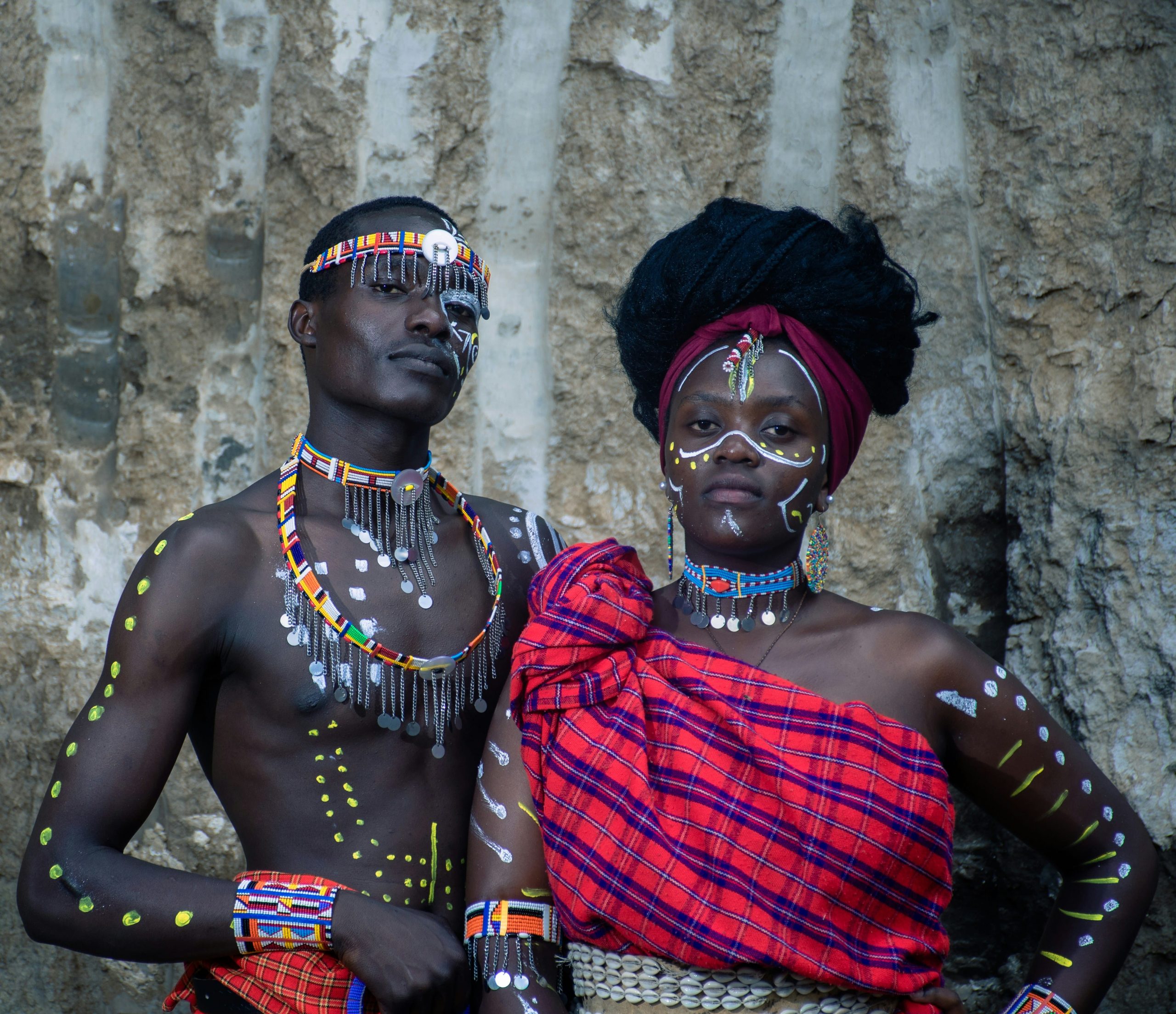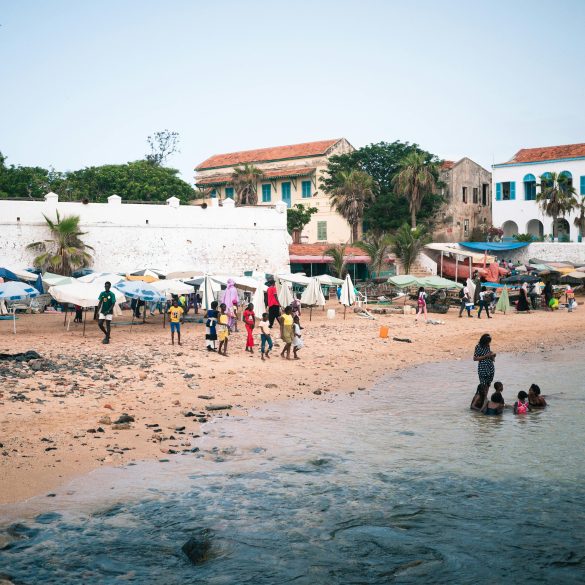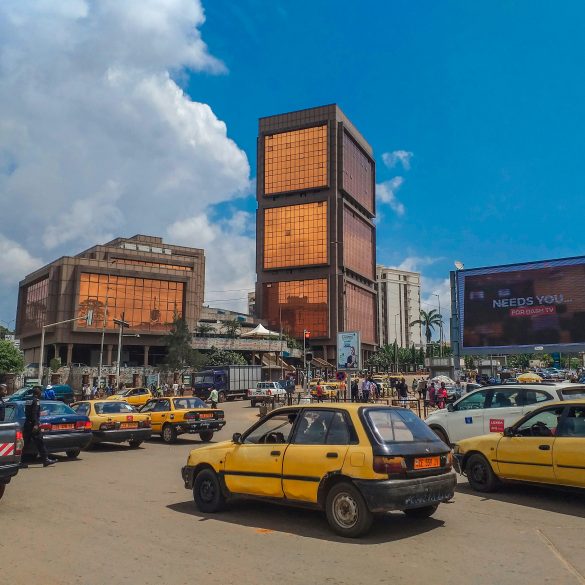Tribus del Valle del Omo: Cultura, Arte Corporal y Costumbres
Al caminar por el Valle del Omo por primera vez, recuerdo sentir como si hubiera atravesado un portal hacia la historia viva de la humanidad. Aquí, en la remota naturaleza del sur de Etiopía, decenas de tribus indígenas mantienen prácticas culturales que se remontan a miles de años atrás; prácticas que parecerían imposibles de preservar en nuestro mundo interconectado. Sin embargo, de alguna manera, perduran.
El valle del Omo representa una de las regiones con mayor diversidad cultural de África, hogar de aproximadamente 200.000 personas pertenecientes a más de 16 grupos étnicos distintos.1Lo que más me impacta no es solo el espectáculo visual del elaborado arte corporal y la vestimenta ceremonial, sino el significado más profundo que estas tradiciones tienen para las comunidades que navegan entre la sabiduría antigua y las presiones modernas.
Patrimonio cultural de Etiopía
Etiopía reconoce más de 80 grupos étnicos distintos, y las tribus del valle del Omo representan algunas de las comunidades indígenas con mayor integridad cultural del país. La región fue declarada Patrimonio de la Humanidad por la UNESCO en 1980 por su importancia paleontológica y su patrimonio cultural vivo.
He dedicado mucho tiempo a investigar y observar estas comunidades, y sinceramente, cada visita me enseña algo nuevo sobre la adaptabilidad humana y la resiliencia cultural. Las tribus del valle del Omo —incluidos los pueblos hamar, mursi, karo, surma y dassanech— han desarrollado sofisticados sistemas sociales, tradiciones artísticas y estrategias de supervivencia perfectamente adaptadas a su duro entorno.
Lo que me fascina, tanto como observador como investigador, es cómo estas comunidades mantienen identidades distintivas a la vez que comparten ciertas experiencias humanas universales. Las ceremonias matrimoniales, los rituales de mayoría de edad, las creencias espirituales y la expresión artística adoptan formas radicalmente diferentes en las distintas tribus, pero cumplen propósitos fundamentales similares en la construcción de la cohesión comunitaria y la identidad individual.
Las prácticas de arte corporal por sí solas —que abarcan desde intrincadas escarificaciones hasta elaboradas placas labiales y coloridas pinturas corporales— representan complejos sistemas de comunicación. No se trata simplemente de elecciones decorativas, sino de expresiones significativas de estatus social, creencias espirituales, afiliación tribal e identidad personal. Recuerdo ver a una mujer Karo preparándose para una ceremonia, pasando horas aplicando patrones con tiza blanca que contaban la historia de su linaje familiar y sus logros personales.
Sin embargo, debo abordar algo que me preocupó durante mis primeras investigaciones: la tendencia de los foráneos a ver estas culturas como espectáculos exóticos en lugar de sociedades sofisticadas con sus propios desafíos, aspiraciones y autonomía. Estas comunidades se enfrentan a presiones reales derivadas de la modernización, el cambio climático y el desarrollo económico que amenazan sus formas de vida tradicionales.
Tribus principales y sus territorios únicos
La diversidad entre las tribus del Valle del Omo nunca deja de sorprenderme. Cada grupo ha desarrollado prácticas culturales distintivas, perfectamente adaptadas a su entorno y experiencias históricas específicas. Permítanme presentarles las principales tribus que he tenido el privilegio de conocer, ya que comprender sus diferencias nos ayuda a apreciar la increíble capacidad humana de adaptación cultural.
| Tribu | Población | Ubicación principal | Prácticas notables |
|---|---|---|---|
| Hamar | 46,000 | Valle oriental del Omo | Ceremonias de salto de toro, peinados intrincados |
| Mursi | 11,500 | Área del Parque Nacional Mago | Placas de labios, lucha con palos |
| Karo | 2,500 | Orillas del río Omo | Pintura corporal, escarificación |
| Surma | 35,000 | Tierras altas occidentales | Placas labiales, cultivo de ganado |
El pueblo Hamar captó especialmente mi atención durante mi investigación. Han desarrollado una de las jerarquías sociales más complejas que he encontrado, centrada en sistemas basados en la edad y la propiedad del ganado.2Lo que realmente me impactó fue cómo su famosa ceremonia del salto de toro no es solo un rito de paso, sino todo un mecanismo social que determina la elegibilidad para el matrimonio, el estatus económico y la responsabilidad comunitaria.
Recuerdo haber hablado con un anciano hamar que me explicó cómo la ceremonia conecta a los jóvenes con sus antepasados, su comunidad y su futuro rol como esposos y padres. El acto físico de correr sobre el lomo de los toros representa un salto metafórico hacia la edad adulta, pero las semanas de preparación implican aprender canciones tradicionales, comprender genealogías y dominar conocimientos culturales que los guiarán a lo largo de sus vidas.
Perspectiva cultural
El pueblo Karo, a pesar de ser la tribu más pequeña, con tan solo unos 2500 miembros, ha desarrollado las tradiciones de pintura corporal más sofisticadas del valle. Sus expresiones artísticas suelen incorporar elementos contemporáneos, manteniendo al mismo tiempo el simbolismo tradicional: un ejemplo perfecto de adaptación cultural sin abandonar los valores fundamentales.
El pueblo Mursi me fascina por razones completamente distintas. Su costumbre de usar placas labiales —que, para ser sincera, al principio me pareció chocante para mi sensibilidad occidental— representa en realidad uno de los sistemas más complejos de empoderamiento femenino y estándares de belleza que he estudiado. El tamaño de la placa labial de una mujer se correlaciona tradicionalmente con la riqueza de su familia y su propio estatus social.3.
Pero esto es lo que realmente cambió mi perspectiva: muchas mujeres mursi eligen no usar placas labiales hoy en día, y esta decisión es respetada en sus comunidades. La práctica continúa entre quienes valoran la tradición, mientras que otras se adaptan a las circunstancias cambiantes. Esta flexibilidad desafía los estereotipos sobre la rigidez o la inmutabilidad de las culturas "primitivas".
- Las intrincadas faldas de cuero de las mujeres de Hamar, decoradas con conchas de cauri, indican el estado civil y la riqueza familiar.
- Los hombres Karo usan tiza blanca, ocre rojo y carbón para crear pinturas corporales que cuentan historias personales.
- Las comunidades surma practican elaboradas competiciones de lucha con palos que sirven tanto para entretener como para resolver conflictos.
- El pueblo Dassanech ha desarrollado sofisticadas técnicas de gestión de inundaciones para la agricultura a lo largo del río Omo.
El pueblo surma, que habita las regiones más montañosas, ha adaptado sus prácticas culturales a los entornos de las tierras altas de maneras que me sorprenden constantemente. Su relación con el ganado no es solo económica, sino profundamente espiritual y social. Los nombres, colores y características del ganado aparecen en su poesía, canciones y nombres personales, creando un ecosistema cultural donde las identidades humanas y animales se entrelazan de maneras fascinantes.

Arte corporal sagrado y decoración ceremonial
Las tradiciones de arte corporal del Valle del Omo representan algunos de los sistemas de comunicación no escritos más sofisticados que he conocido. Cada cicatriz, cada diseño pintado, cada pieza de joyería cuenta una historia: no solo sobre la identidad individual, sino también sobre la pertenencia a una comunidad, las creencias espirituales y las relaciones sociales que pueden trascender generaciones.
Lo que inicialmente me atrajo al estudio de estas prácticas fue su increíble diversidad, pero lo que me mantiene fascinado es su significado más profundo. He aprendido que desestimar estas tradiciones como decoración "primitiva" implica pasar por alto su papel como tecnologías sociales complejas que mantienen la cohesión comunitaria, transmiten conocimiento cultural y brindan a las personas poderosas herramientas para la autoexpresión.
Las prácticas de escarificación me intrigan especialmente porque requieren gran dedicación y planificación. Entre el pueblo Karo, los jóvenes se someten a elaboradas escarificaciones en el pecho y los brazos, lo que indica su valentía y disposición para asumir responsabilidades adultas.4El proceso puede tardar meses en completarse, y cada sesión se basa en el trabajo previo para crear intrincados patrones en relieve.
Recuerdo ver a un joven Karo recibir su escarificación, rodeado de familiares varones que cantaban canciones tradicionales y lo animaban. La ceremonia no se trataba de soportar el dolor, sino de demostrar compromiso con los valores culturales y aceptar la guía de los ancianos que habían pasado por la misma transformación décadas atrás.
Las prácticas temporales de pintura corporal ofrecen diferentes perspectivas sobre la expresión cultural. Las comunidades Karo utilizan tiza blanca, ocre rojo y carboncillo para crear elaborados diseños para ceremonias e interacciones sociales cotidianas. Lo que me llama la atención es cómo estas pinturas cambian según el contexto: los diseños funerarios difieren de los patrones de celebración, que a su vez difieren de las marcas sociales cotidianas.
- Los patrones de tiza blanca a menudo representan protección espiritual y conexión con los antepasados.
- Los diseños en ocre rojo generalmente indican celebración, fertilidad y fuerza vital.
- Las marcas de carbón frecuentemente simbolizan fuerza, resistencia y responsabilidades adultas.
- Los patrones combinados crean narrativas complejas sobre la identidad individual y comunitaria
Las tradiciones del plato labial entre las mujeres Mursi y Surma merecen un debate cuidadoso y respetuoso, ya que han sido muy malinterpretadas por personas externas. Estas prácticas no se basan en la conformidad con las expectativas masculinas ni en seguir tradiciones rígidas, sino en la autonomía femenina, los estándares de belleza determinados por las propias mujeres y la participación en sistemas económicos que brindan independencia y respeto.5.
He aprendido que el proceso de crear y usar placas labiales implica una amplia formación en conocimientos culturales, habilidades económicas y relaciones sociales. Las jóvenes aprenden canciones tradicionales, dominan técnicas de cerámica, comprenden genealogías y desarrollan la confianza necesaria para hablar en público y ejercer el liderazgo comunitario. La placa labial se convierte en un símbolo de esta educación integral.
Adaptaciones modernas
Muchos jóvenes en las comunidades del Valle del Omo están encontrando maneras creativas de honrar el arte corporal tradicional, adaptándose a las circunstancias contemporáneas. Algunos usan decoraciones temporales para ocasiones especiales mientras estudian o buscan empleos que requieren estándares de apariencia diferentes.
Las tradiciones en joyería y vestimenta complementan las modificaciones corporales, creando una identidad cultural integral. La ropa de cuero de las mujeres hamar, decorada con conchas de cauri, adornos metálicos y cuentas de vidrio, no solo representa riqueza personal, sino también alianzas familiares, relaciones comerciales y conexiones regionales que pueden extenderse a múltiples grupos étnicos.
Lo que realmente me impresiona es cómo estas comunidades equilibran la expresión individual con la continuidad cultural. Los jóvenes no se ven obligados a adoptar prácticas tradicionales, sino que se les educa sobre su significado y trascendencia. Algunos optan por la participación plena, otros por la adaptación selectiva, y otros forjan caminos completamente nuevos, manteniendo sus conexiones culturales por otros medios.
Los aspectos ceremoniales del arte corporal revelan una comprensión profunda de la psicología, la dinámica social y las creencias espirituales. La preparación para ceremonias importantes puede durar semanas, con la colaboración de los miembros de la comunidad en los diseños, el intercambio de materiales y la enseñanza de técnicas que garantizan la transmisión del conocimiento cultural a las generaciones más jóvenes.
Costumbres tradicionales y desafíos modernos
Las costumbres matrimoniales en las tribus del Valle del Omo revelan una increíble sofisticación en la creación de vínculos sociales, la gestión de recursos y el mantenimiento de la continuidad cultural. He observado ceremonias que unen a múltiples comunidades, requieren meses de preparación y crean relaciones económicas que pueden perdurar durante generaciones. No se trata de simples celebraciones, sino de instituciones sociales complejas que demuestran un notable ingenio humano para construir sociedades estables.
Entre el pueblo Hamar, las negociaciones matrimoniales implican extensas discusiones sobre intercambios de ganado, responsabilidades familiares y obligaciones comunitarias que se extienden mucho más allá de la propia pareja.6Lo que me fascina es cómo estas negociaciones equilibran las preferencias individuales con las necesidades de la comunidad, creando matrimonios que sirven tanto para propósitos románticos como prácticos.
Sin embargo, los desafíos que enfrentan estas comunidades hoy en día son de una magnitud y complejidad sin precedentes. El cambio climático ha alterado los ciclos agrícolas tradicionales, los proyectos gubernamentales de desarrollo han alterado los caudales de los ríos y los patrones de pastoreo, y el creciente contacto con los mercados globales ha generado oportunidades y presiones que las generaciones anteriores nunca experimentaron.
Necesidades críticas de preservación
La UNESCO estima que 40% de las prácticas tradicionales en el Valle del Omo se han modificado o abandonado en las últimas dos décadas debido a presiones externas. Sin embargo, las iniciativas de preservación lideradas por la comunidad están mostrando resultados prometedores en la conservación del conocimiento cultural, adaptándose a la vez a las realidades contemporáneas.
He visto cómo las generaciones más jóvenes afrontan estos desafíos con una creatividad y sabiduría notables. Algunos cursan estudios formales, manteniendo al mismo tiempo una profunda conexión con el conocimiento tradicional. Otros desarrollan nuevas oportunidades económicas basadas en habilidades culturales: técnicas de cerámica tradicional adaptadas a los mercados turísticos, conocimientos de medicina tradicional aplicados a programas de salud comunitaria.
El papel del turismo ético me interesa especialmente porque representa tanto oportunidades como riesgos para estas comunidades. El turismo cultural responsable puede generar ingresos que apoyan los estilos de vida tradicionales, a la vez que educa a los visitantes sobre la complejidad y el valor de las culturas indígenas.7Sin embargo, el turismo explotador puede reducir las ricas tradiciones culturales a representaciones superficiales.
- Las iniciativas de turismo controladas por la comunidad garantizan que la población local se beneficie del interés de los visitantes
- Los programas de educación cultural ayudan a los visitantes a comprender la importancia de las prácticas tradicionales.
- Los protocolos de fotografía respetan la privacidad y los aspectos sagrados de la vida cultural.
- Los beneficios económicos del turismo apoyan actividades tradicionales como la cría de ganado y la producción artesanal.
De cara al futuro, soy cautelosamente optimista sobre la resiliencia de las culturas del Valle del Omo. Estas comunidades han sobrevivido a sequías, conflictos y cambios políticos durante siglos, adaptándose y manteniendo sus valores fundamentales. Sus desafíos actuales son de diferente magnitud, pero sus fortalezas fundamentales —fuertes lazos sociales, conocimiento ecológico sofisticado y sistemas culturales flexibles— permanecen intactas.
El futuro de estas culturas depende en parte del apoyo y la comprensión externos, pero principalmente de las decisiones que toman los propios miembros de la comunidad. Mi función como observador e investigador es documentar, aprender y compartir conocimientos de manera que apoyen su futuro autodeterminado, en lugar de imponer expectativas externas sobre lo que sus culturas deberían llegar a ser.
Lo que más me da esperanza es ver a jóvenes que se sienten igual de cómodos con el conocimiento tradicional y las habilidades contemporáneas, que pueden celebrar ceremonias ancestrales y navegar por las redes de comunicación globales, que entienden que la preservación cultural no significa estancamiento cultural. Estas comunidades están forjando su propio futuro, y ese futuro parece profundamente arraigado y brillantemente adaptable.
Referencias



